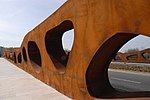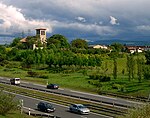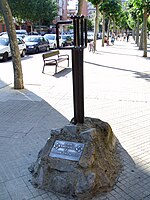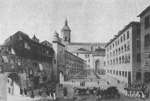Arriaga, Álava
Concejos in Vitoria-GasteizFormer populated places in Spain

Arriaga is a depopulated concejo in the municipality of Vitoria-Gasteiz, province of Álava, Basque Country, Spain. It has been absorbed into the city and is now part of the neighborhood of Lakua-Arriaga.
Excerpt from the Wikipedia article Arriaga, Álava (License: CC BY-SA 3.0, Authors, Images).Arriaga, Álava
Voluntaria Entrega kalea/Calle Voluntaria Entrega, Vitoria-Gasteiz Arriaga-Lakua
Geographical coordinates (GPS) Address Nearby Places Show on map
Geographical coordinates (GPS)
| Latitude | Longitude |
|---|---|
| N 42.8667 ° | E -2.68 ° |
Address
Voluntaria Entrega kalea/Calle Voluntaria Entrega 69
01010 Vitoria-Gasteiz, Arriaga-Lakua
Autonomous Community of the Basque Country, Spain
Open on Google Maps










